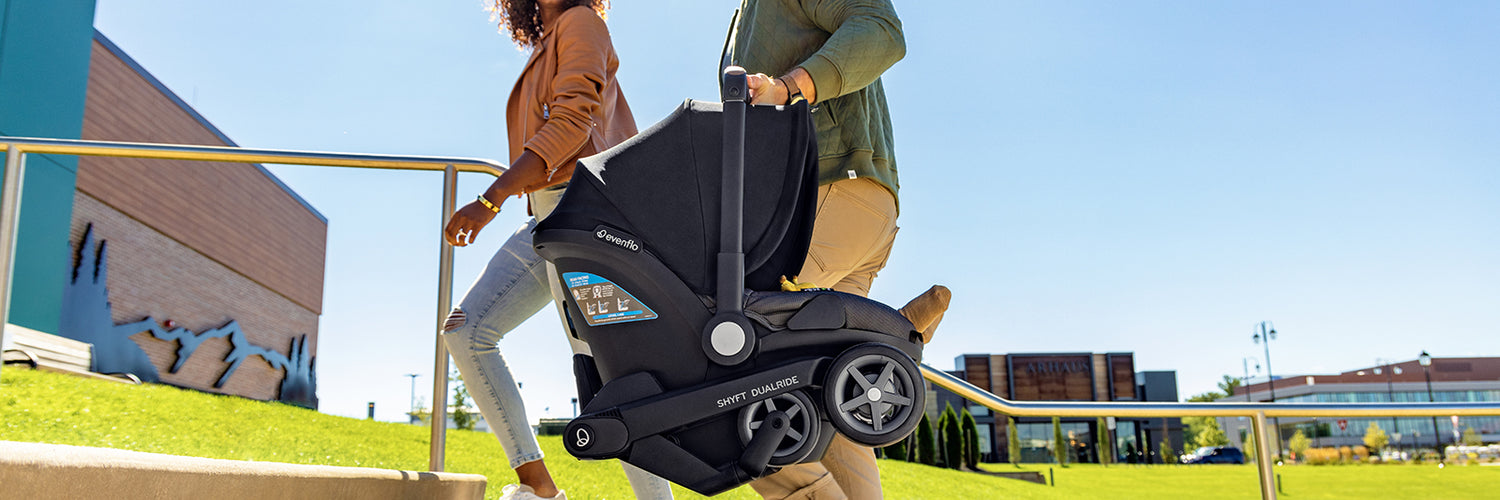Is Your Child Growing Like a Weed?
Does it ever feel like your child has grown by inches overnight? The last couple of years have felt like that with my three-year-old. Every time I turn around, he has outgrown another pair of pants. It is important to remember that young kids can also outgrow the harness positioning in their 5-point harness car seat. Below are a few general tips to help you figure out if your child is ready for a harness adjustment or to move into a new car seat. Remember – it is always important to read and follow the manufacturer’s car seat guidelines and instruction manual that came with your child’s seat for specific instructions, including car seat height and weight limits.
Rear-Facing Car Seats
When using a rear-facing car seat, most manufacturers require that the harness straps be located at or below your child’s shoulders. You do not want to move up to the next harness slot until your child’s shoulders are even with or slightly above the next harness position on your child’s seat.
Generally, when using a rear-facing car seat, the child’s entire head should be contained within the car seat. For Evenflo car seats, we require at least an inch of space between the top of the child’s head and the top of the car seat. (Remember – always follow the directions provided by the manufacturer of your particular car seat). If your child has a long torso, for example, they may outgrow the car seat based on their seated height, before they reach the stated height (or weight) limit of the car seat. Luckily, it is relatively easy to glance down at your child’s head to figure out if they are getting close to outgrowing the top of the car seat.
Don’t move into a forward-facing car seat too quickly! The American Academy of Pediatrics and the National Highway Traffic Safety Administration recommend children use a rear-facing car seat until they outgrow the height and weight limits of their rear-facing car seat. Rear-facing convertible and all-in-one car seats provide higher height and weight limits generally than infant-only car seats and can help keep your child rear-facing longer.
Forward-Facing Car Seats
In a forward-facing car seat, on most models, the harness straps should be positioned at or above your child’s shoulders. Once the harness straps start to come from below your child’s shoulders, they should be moved up to the next available slot. Remember to consult your child’s car seat instruction manual for guidance.
Many manufacturers, including Evenflo, require that the top of the child’s ears be at or below the back of the car seat so that the child’s head can be properly supported. When their ears come up above the top of the car seat it is either time to move up the headrest or it may be time to transition to a booster seat.
Belt-Positioning Booster Seats

A belt-positioning booster seat does exactly that – it simply raises the child up to the proper position in the vehicle so that the lap and shoulder seat belts fit and can be used to restrain the child. The vehicle seat belt system is designed for an adult, so kids need that extra boost to get the necessary protection from the seat belt. When properly positioned, the lap belt should fit across the child’s hips (not belly) and the shoulder belt should go across the chest and shoulder (not neck and face). If you move your child into a booster seat too soon, you may find that the belt does not fit properly or that the child will not sit in the proper position while you are in the car. In either of those situations, you should keep them in a harnessed car seat until they are ready to make the transition.
Just like in a forward-facing car seat, the child’s head should be supported, either by the headrest of a high back booster seat or by the headrest of the vehicle seat. Move the headrest up as your child grows to ensure they have proper support. The top of the child’s ears should be at or below the top of the headrest.
Think your child may have outgrown their seat? Find their new car seat by shopping Evenflo car seats now!




